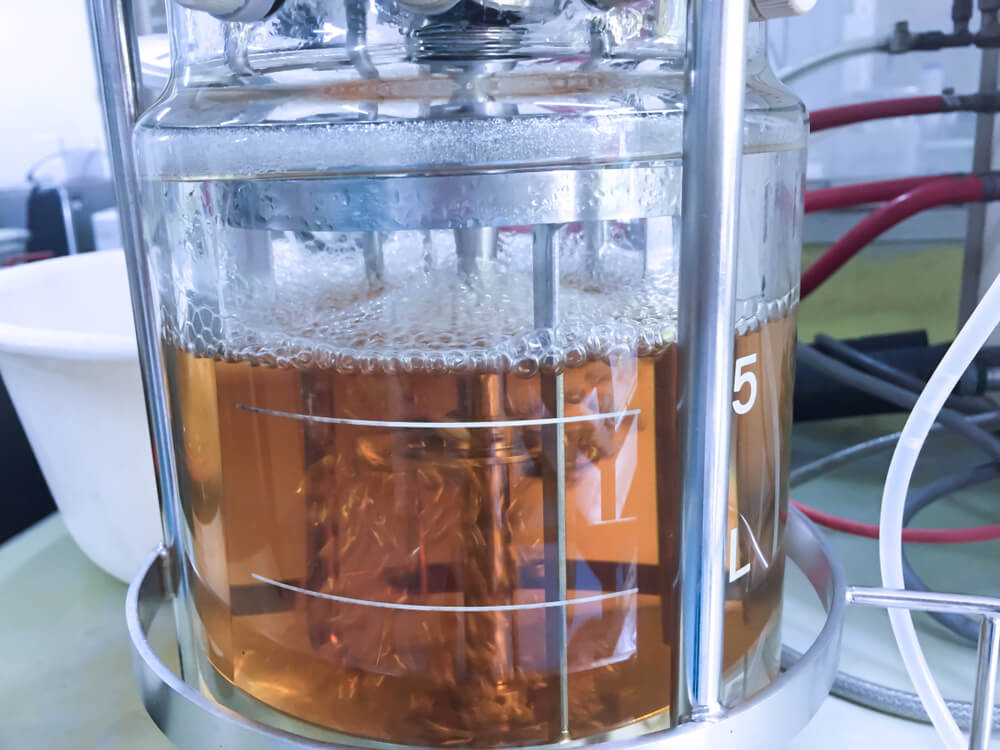Designed to power high-performance cars, E85 is a more environmentally friendly source of fuel than regular petrol. It produces lower emissions due to the smaller percentage of regular petrol.[i]
This type of fuel contains a mix of regular unleaded petrol and bio-ethanol, which is a type of fuel derived from animal waste or plant sources. Bio-ethanol is chemically treated and mixed with regular petrol to turn it into fuel for engines designed to use this type of fuel.[ii]
The number 85 in E85 indicates the percentage of bio-ethanol used in the fuel. Despite its name, the amount of bio-ethanol in E85 can range between 70% and 85%.
E85 fuel can be made up of a ratio of 70% bio-ethanol and 30% petrol yet still be called E85. While E85 with 85% bio-ethanol is more common, E85 fuel for sale during winter in colder parts of the country could likely feature this 70-30 mix.
Why? Well, vehicles in cold weather under 15˚ Celsius can have trouble starting when using the 85% bio-ethanol E85.[iii]
The different percentages of E85 are all labelled as E85 fuel, and the different mixes all provide a similar output for your vehicle, though the exact octane rating will differ.[iv]

If your car has a flexible-fuel engine (an internal combustion engine that can run on a mixture of fuels) or is a V8 supercar (which isn’t street legal), you can top up your tank with E85 fuel.[v]
Not all vehicles can use E85, though. If your car isn’t designed for this type of fuel, you can damage your car’s fuel pumps and engine. Be sure to refer to the owner’s manual to see which fuels are recommended for your vehicle and whether you can use E85 fuel.
The plus sides of E85 don’t just benefit you, but the environment as well. Ethanol fuels produce less harmful emissions and greenhouse gases than regular petrol. This includes carbon dioxide and other pollutants which can be bad for our health if we breathe too much into our lungs.[vi]
Additionally, E85 is typically cheaper than regular unleaded petrol.[vii] If you have a car that’s equipped with a flexible-fuel engine, then using E85 can be good for the planet and your wallet when filling up.
While E85 has an octane rating of 105, which makes it more powerful than regular petrol,[viii] there are some drawbacks.
Even though its higher octane rating means it burns effectively and provides additional power, you may find yourself needing to refuel the car sooner than if you use regular petrol.[ix] This is why E85 is cheaper than regular petrol; because it has approximately 75% of the energy output of regular petrol. Regular refuelling may also cancel out the benefit of its cheaper price.
Ethanol fuels can also have a corrosive impact on the fuel lines and engine of your vehicle, which is why it’s vital to make sure that E85 is compatible for your vehicle – flexible-fuel engines are designed to withstand this corrosive effect.[x]
While you won’t be able to compare the prices of E85, you can track down the best prices in your area for other types of fuel with our easy-to-use free fuel price comparison service in our Simples app. That way, it’s much easier to hunt down a good deal at the bowser.
[i] Ethanol E85 fuel quality and fuel quality information (labelling) standards. Department of the Environment and Energy, Australian Government. 2012.
[ii] Biofuels. Australian Taxation Office, Australian Government. 2016.
[iii] Regulation Impact Statement. Fuel Quality Standard: Ethanol (E85) Automotive Fuel. Department of Sustainability, Environment, Water, Population and Communities, Australian Government. 2012.
[iv] Ibid.
[v] Ethanol E85 fuel quality and fuel quality information (labelling) standards. Department of the Environment and Energy, Australian Government. 2012.
[vi] Ethanol and emission reductions. Bioenergy Australia. 2016.
[vii] Setting National Fuel Quality Standards. Proposed Fuel Quality Standard – Ethanol (E85) Automotive Fuel. Department of Sustainability, Environment, Water, Population and Communities, Australian Government. 2011.
[viii] E10 Fuel for Thought: The Facts. NRMA, New South Wales Government. 2019.
[ix] Ethanol (E10, P100 and E85). Department of Planning, Transport and Infrastructure, Government of South Australia. 2011.
[x] Setting National Fuel Quality Standards. Proposed Fuel Quality Standard – Ethanol (E85) Automotive Fuel. Department of Sustainability, Environment, Water, Population and Communities, Australian Government. 2011.